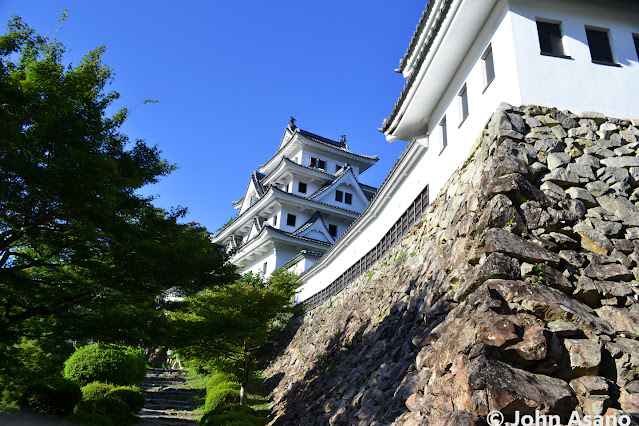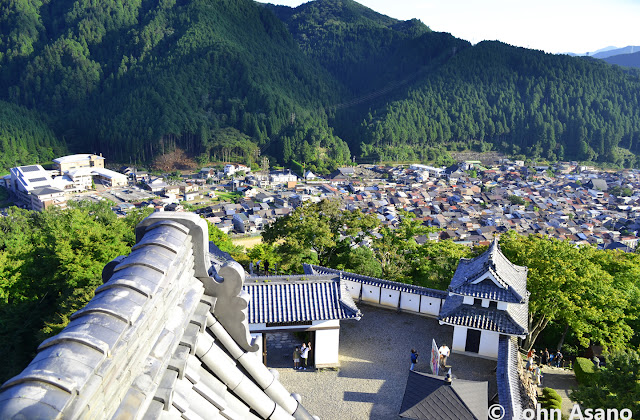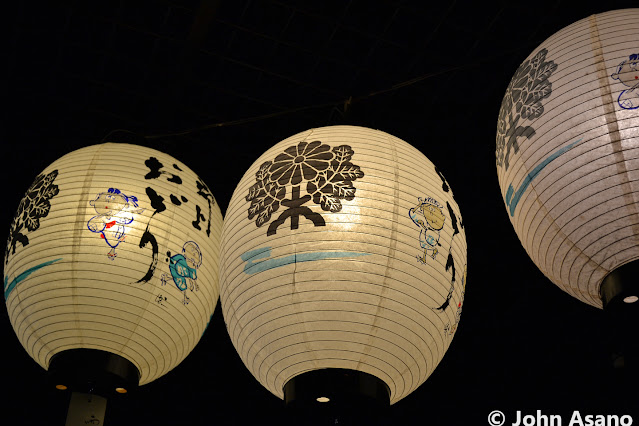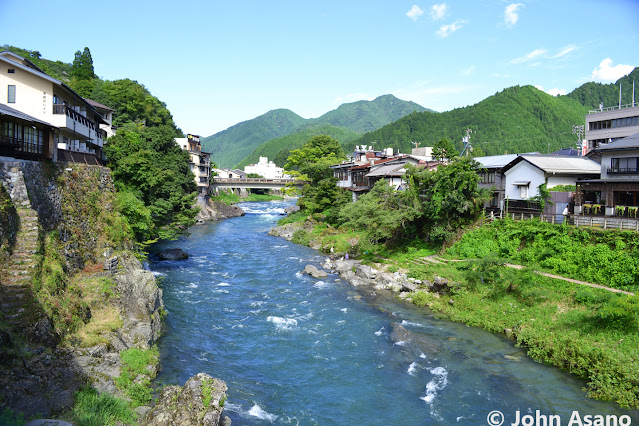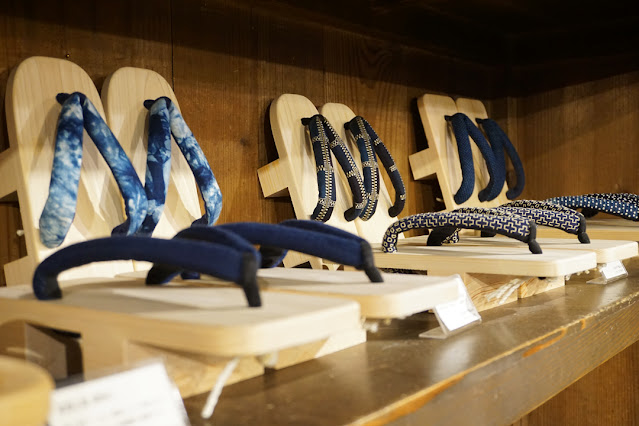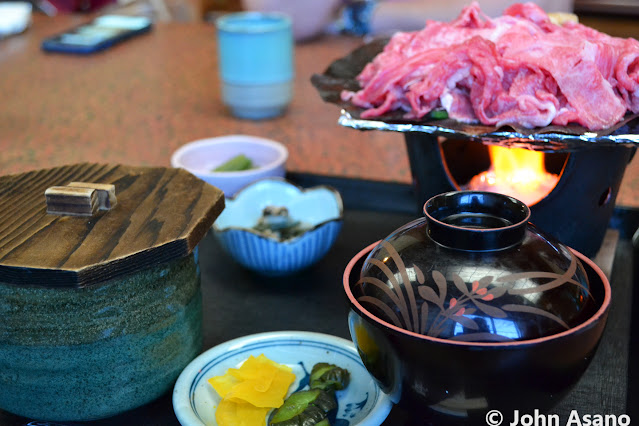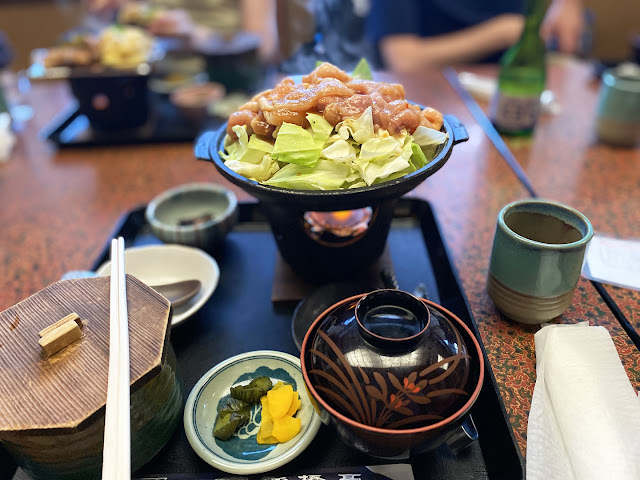On the second day of the Samurai & Timber Tour organized by the good folks at Nagoya is not boring and Nagoya City we had the chance to explore this historic town in Aichi Prefecture. You can read about Day 1 in Gujo Hachiman. Here are some of the highlights from my visit.
National Treasure Inuyama Castle
Inuyama Castle is the symbol of Inuyama, and one of only five castles in Japan designated as a national treasure. The castle was originally built in 1537 by Oda Nobuyasu, uncle of Oda Nobunaga (1534-1582), one of the leading figures of the Sengoku (Warring States) period and the first “Great Unifier” of Japan.
 |
| View over the grounds of Inuyama Castle |
The castle might be small, but it is packed full of history with the donjon as authentic as they come. The wooden tower is the oldest original still standing in Japan. The climb up the tight and narrow stairway to the top of the tower is worth it for sweeping views over the Kiso River and the castle town below.
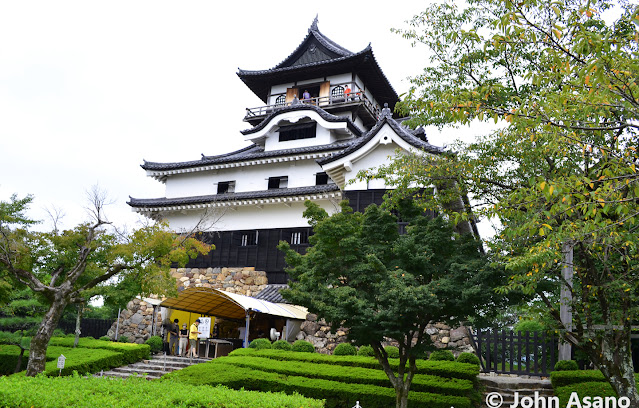 |
| The National Treasure Inuyama Castle |
Jokamachi Castle Town
The townscape of Inuyama still retains vestiges of an Edo period (1603-1868) castle town, making you feel like you have slipped back in time to the age of the samurai. The castle town, also known as “Showa Alley”, stretches in a straight line from the foot of Inuyama Castle to Inuyama Station. It is home to numerous historic wooden houses which now function as souvenir shops, restaurants and stalls selling all kinds of delicious street food.
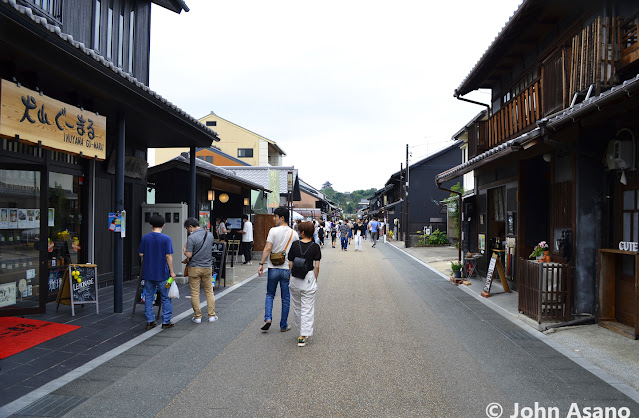 |
| A stroll around the old castle town |
 |
| Traditional wooden buildings in the old town |
Miso Dengaku
When in Rome, or Inuyama in this case, you must try Miso Dengaku. This local specialty is skewered tofu blocks coated in red miso paste and grilled over charcoal flames. At Honmachi Saryo, you can try 7 different flavours with a variety of different tofu, konyaku (yam cake) and toppings.
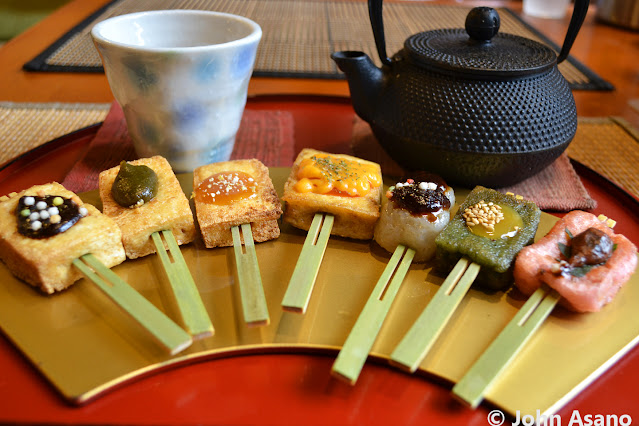 |
| Miso Dengaku at Honmachi Saryo |
There is a beautiful little garden at the back of the shop where you can experience a bit of Japanese culture. I enjoyed eating my miso dengaku while looking at the garden from my window seat.
 |
| The Japanese garden at Honmachi Saryo |
Feast on Tasty Street Food
The Inuyama Castle town is a treasure trove of tasty and visually stunning dishes, so make sure that you check it out when you visit. The area has some serious cool vibes about it with new trendy food and restaurants popping up all the time. Each time that I visit, it seems to be different with new tasty treats to try. It is also extremely popular with young people, who like to dress in yukata and stroll the streets to enjoy its delights.
 |
| Enjoy tasty street food in the castle town |
Goheimochi
My all-time favourite street food is goheimochi. This regional specialty from the mountains of central Japan is a skewered rice cake coated with sweet sesame, walnut miso grilled over charcoal flames. The best place to try this local delicacy in Inuyama is at the Yamada Goheimochiten shop on the main street.
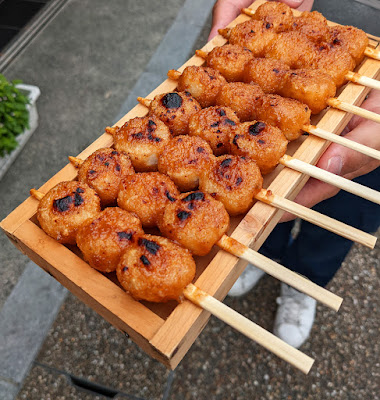 |
| Goheimochi via Nagoya is not boring |
Inuyama Castle Monaka Sweets
The Matsuei Honten Shop is more than 100 years old and is known for its cute Inuyama Castle Monaka sweets. The delicious goodies are a wafer filled with sweet red bean paste and come in the shape of Inuyama Castle. They are a tasty treat to enjoy with some green tea, or a fantastic souvenir to take home from your travels.
 |
| Inuyama Castle Monaka Sweets via Nagoya is not boring |
Kakigori (Shaved Ice)
My go to summer treat to beat the heat is kakigori (shaved ice). This cold, refreshing dessert is shaved ice topped with a flavoured syrup, making it the perfect way to cool down on a hot summer day. The stylish Kami no Manimani in Inuyama has the fluffiest kakigori I have ever eaten. Here they serve a cute bird-shaped version of this Japanese classic in either strawberry or lemon Calpis.
 |
| Kakigori at Kami no Manimani |
Urakuen Garden
Urakuen Garden just to the east of Inuyama Castle is famous for its quaint Japanese garden and historic teahouse. It was once the home of samurai warlord Oda Nobunaga’s younger brother, Oda Urakusai (1547-1621), who dedicated his life to the study of the tea ceremony. Urakusai was a student of the famous tea master Sen no Rikyu (1522-1591).
 |
| Urakuen Garden |
The garden contains the early 17th century teahouse, Jo-an, which is listed as a National Treasure of Japan because of its unique design and history. It was originally built by Urakusai in 1618 as part of a temple complex in Kyoto, before being relocated to Tokyo, and later Kanagawa, before finally coming to Inuyama. It is considered to be a masterpiece of architecture and one of Japan’s three finest teahouses. The perfect bit of Zen is to enjoy some Matcha green tea and a Japanese sweet at Ko-an teahouse in Urakuen Garden.
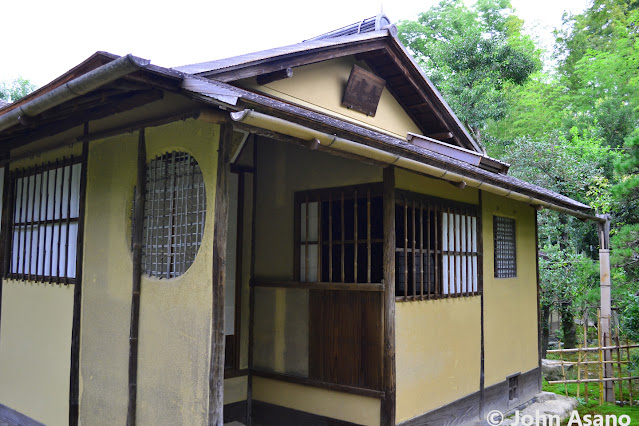 |
| Jo-an Teahouse at Urakuen Garden |
Hotel Indigo Inuyama Urakuen Garden
Hotel Indigo Inuyama Urakuen Garden is a high-end lifestyle hotel completely integrated with its surrounding neighbourhood. The beautifully designed boutique hotel is inspired by the many cultural treasures of Inuyama which include Inuyama Castle, Jo-an teahouse at Urakuen Garden and ukai (cormorant fishing). The hotel features a natural hot spring (the only one in Inuyama), European cuisine restaurant and stunning views of nearby Inuyama Castle.
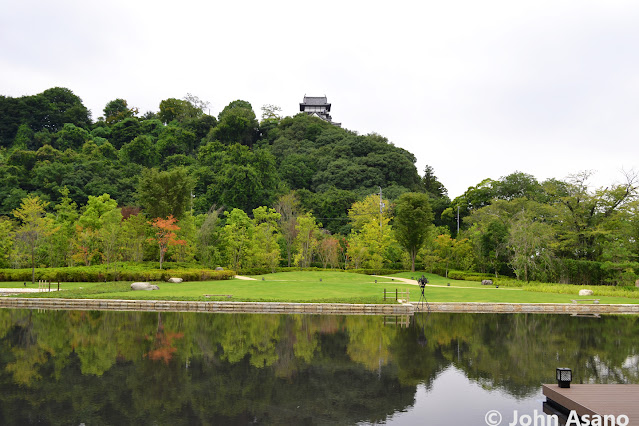 |
| View of Inuyama Castle from the hotel |
The reception area has an impressive art wall featuring ukai cormorant fishing boats and their bonfires with the beautiful lobby offering fantastic views of nearby Inuyama Castle and the lush green hotel garden. My room had a wonderful view of Inuyama Castle and the Kiso River. The spectacular breakfast comes in a choice between Japanese or American and as with everything in this hotel, it was beautifully presented.
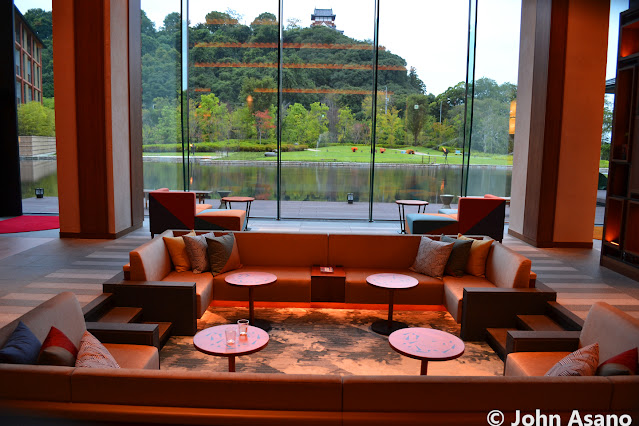 |
| The lobby at Hotel Indigo Inuyama Urakuen Garden |
 |
| The reception area at the hotel |
 |
| The American style breakfast via Hotel Indigo Inuyama Urakuen Garden |
Iaido Experience
Get into the samurai spirit by trying Iaido, a Japanese martial art that focuses on awareness and being able to draw your sword quickly in order to respond to sudden attacks. Here in Inuyama, you can dress in traditional clothing and experience this ancient martial art with real swords, allowing you to better understand the culture and art of a bygone era.
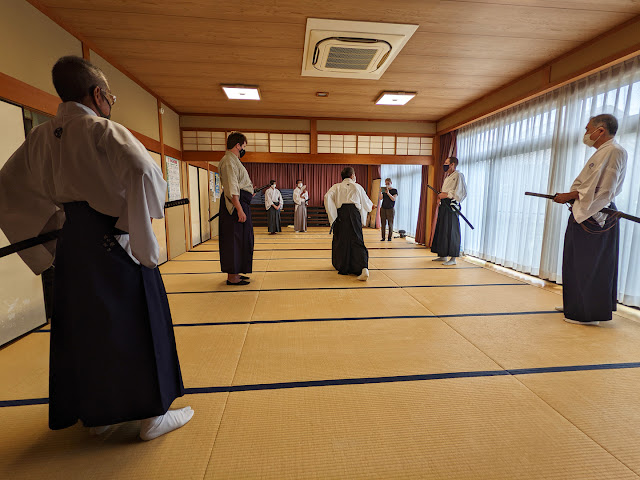 |
| Iaido experience in Inuyama via Nagoya is not boring |
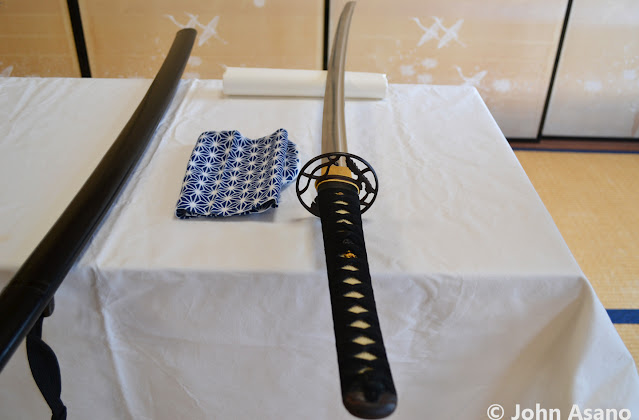 |
| Real samurai swords at the Iaido experience |
How to Get to Inuyama
From Meitetsu Nagoya Station, take a Meitetsu train on the Inuyama Line to Inuyama Station. The one-way ride takes about 25-30 minutes and costs ¥570.
Wrap Up
Inuyama really is the perfect place to take a leisurely stroll to soak up the atmosphere of its historic sites as well as its chic food and traditional culture. Make sure you add it to your itinerary for any visit to central Japan.
Remember to read about day 1 of the tour in Gujo Hachiman and stay tuned for our next article where we head to Nagoya in Aichi Prefecture for day 3 of the tour. If you want to book your own epic Samurai & Timber tour of Gujo Hachiman, Inuyama and Nagoya, visit the Nagoya is not boring website.
 |
| The National Treasure Inuyama Castle |





